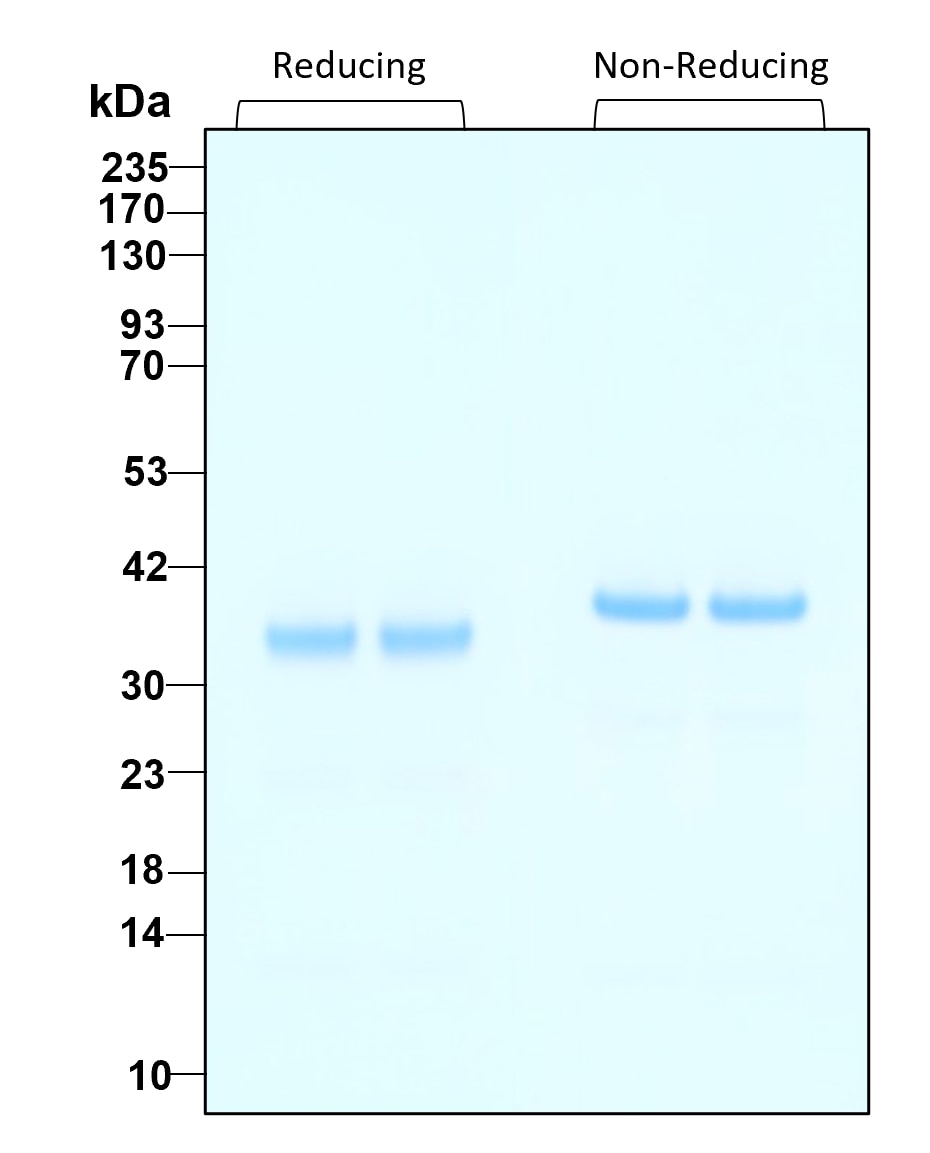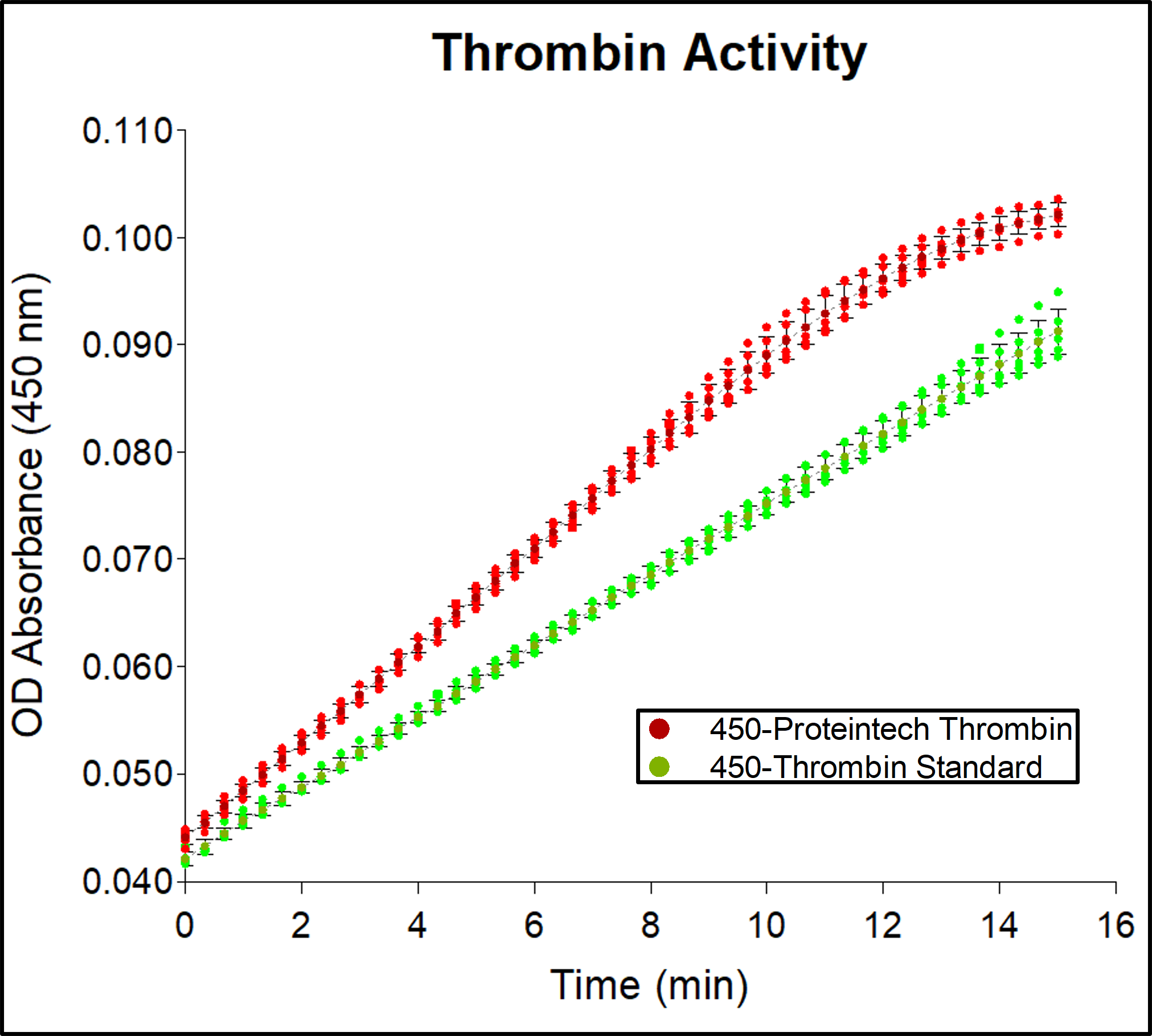Validation Data Gallery
Technical Specifications
| GeneID | 2147 |
| Species | Human |
| Expression | HEK293 |
| Activity(Primary) | 1000-5000 units/mg |
| Purity | >95% |
| Endotoxin | <1 EU/µg |
| Accession Number | P00734 |
| Molecular Mass | 34 kDa reduced, 36 kDa non-reduced, monomer, glycosylated |
| Formulation | 20 mM MES pH 6.0 + 500 mM Choline Chloride, See Certificate of Analysis for details |
| Species Reactivity | human |
Stability and Reconstitution
| Stability and Storage | This protein is stable for 1 year from the date of receipt if stored between (-20°C) and (-80°C). Repeated freeze thaw cycles should be avoided. |
| Reconstitution | Not Applicable. Product provided in liquid format. |
Background
Coagulation factors are a group of related proteins that are essential for normal blood clotting (haemostasis). After an injury, clots protect the body by sealing off damaged blood vessels and preventing further blood loss. Prothrombin circulates in the bloodstream in an inactive form until an injury occurs. In response to that, prothrombin is converted to its active form, thrombin. Thrombin next converts a protein called fibrinogen into fibrin. Thrombin is also important for cell growth and division, tissue repair, and new blood vessels formation - angiogenesis (PMID: 11154146; 16549895; 15892853; 12421139).
Synonyms
Coagulation factor IIa, F2, Prothrombin, PT, Thrombin
Publications
| Species | Title |
|---|---|


